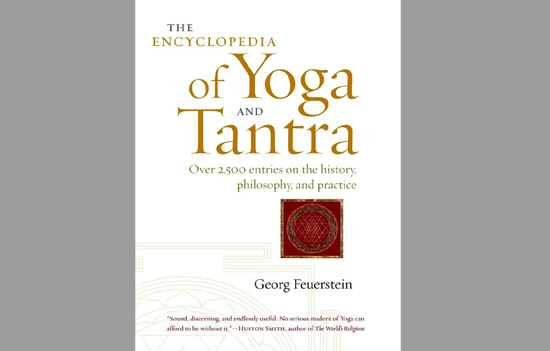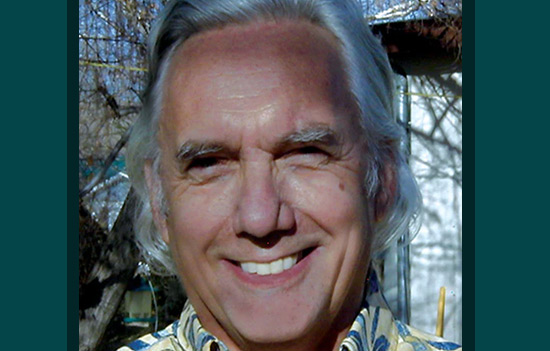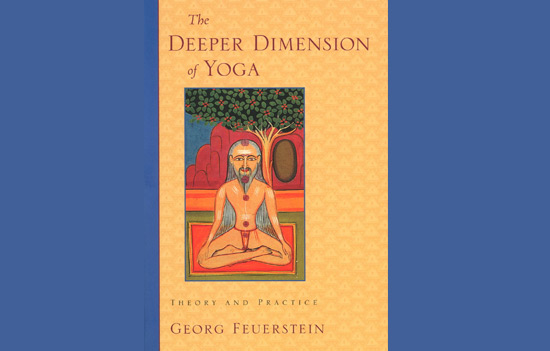- This essay introduces you to Georg Feuerstein’s work on Yoga Sutras and makes a case for followers of Sanatana Dharma to remember him.
If one visits the Wikipedia page of Georg Feuerstein (1947-2012) as this author did on 18th June 2023 at 6.34 pm Indian Standard Time, one will see that nothing much is written about him there except a rudimentary sketch of his life and a long list of books. He is categorized as a German Indologist while he was a staunch defender of his Faith which is Sanatana Dharma.
But when this author visited the pages of many other
Indologists, he found those pages filled with long meandering articles
detailing the banalities of their academic lives. How is it possible that one
of the greatest scholars of our Dharma lived and died relatively unknown in
India whereas other lesser scholars who lampoon our Dharma have become
cult-like figures dividing our academics on lines of Leftist zealotry or
religious bigotry? The answer is very simple.
The contribution of Feuerstein to Yoga and every single branch of our Dharma is so profound that we would rather hate or love other lesser intellects in the West either working for or against our Dharma. Scholarship has been lost since we have allowed ourselves to reduce everything to our levels of understanding. Feurstein’s corpus is so huge and yet uniform in seriousness throughout his career, that we would rather comfort ourselves with lightweight no-brow popular drivel of star academics who have global film-star like followings by successfully pandering to our box-office tastes for either rage or blind-following.
In short, Feuerstein was successful in being a true Yogi who
shunned limelight and chose relative anonymity for his entire career as a
practicing jñāna Yogi.
It is like our knowledge of, say, Sri Vachaspati Mishra
(circa 9th century AD) who is universally acknowledged everywhere online as ‘sarva-tantra-sva-tantra’ --- that is, Mishra was equally capable of negotiating every branch of Indic knowledge systems without becoming biased towards any one darsana (philosophical school). Yet the public has hardly read his works; neither have we bothered to reflect why we do not have easily accessible works by him in English in India, nor are we bothered to find out who his successors are within our Dharma. This is because Sri Mishra’s life was not filled with jazz.

Thankfully
his heir is someone who lived his entire life in Europe and North America ---
Dr. Feuerstein. Tibetan Buddhism or
Vajrayana is alive and flourishing today because it could travel out of Tibet.
The only future that our Dharma has is to flourish in its fullness out of
India.
For instance, Raffaele Torella and Christopher Wallis have
more meaningful things to say about Tantra than any Indian alive. Since both
Torella and Wallis are our mentors in our Faith and continually defend us in
their academic work, we do not even have Wikipedia pages for them.
Had they attacked us, the illiterate but qualified Indic
normative follower of Sanatana Dharma would have made two uselessly long
Wikipedia pages on Torella and Wallis. Before them, it was Sir John Woodroffe
who knew more about Tantra than any other Indian intellectual of his times. While
all other scholars in the interim between Vachaspati Mishra and Georg Feuerstein
aligned themselves to particular systems of Indian and even Western thought, it was only Feuerstein
who could integrate the Rhineland Mystics with Freud and rigorous traditional
Yoga scholarship.
There is no branch of Indian philosophy that Feuerstein did not change forever with a scholarship which will be difficult to match in the coming centuries. Feurstein’s commentaries on the Bhagavad Gita to his works on classical Yoga to Tantra will ricochet through the centuries when everyone forgets rabble rousing academic charlatans. We will quote later from Feuerstein’s works to prove why we need to introspect about our neglect of this great Yogi who was in the best Indic tradition, both a teacher and a scholar. His life too lacked the jazz which was missing in Sri Vachaspati Mishra’s life.
To sum up, he was not a cheat who misrepresented either Indic systems or neglected contemporary advances in psychology and Western philosophy to establish the value and need for Yoga in today’s world. His works are so artlessly simple and therefore difficult that we have decided as a Faith community to settle for easier scholars. It is high time that we allow the irrepression of his memory from our collective unconscious. We need to remember him
today when Yoga is threatened as being just body-postures for health and
longevity.
In truth Yoga is about awakening and channelizing the vital force through ‘nadis’ within us so that finally Kundalini can rise. Feuerstein being the scrupulous scholar-practitioner that he was, realized that Yoga is
Tantra and Tantra is Yoga. Thus, he wrote separate
books on Yoga and Tantra and then published his monumental, The Encyclopedia of Yoga and Tantra. While
Brill's Encyclopedia of Hinduism is a collective effort; Feuerstein’s encyclopedia is nearly a superhuman effort which cannot be replicated by anyone working alone anywhere in the world anymore. Everyone is busy promoting their brand of our Dharma and has little time to undertake these important projects.
It takes the likes of Vachaspati Mishra and Georg Feuerstein to realise that everything in the Indic system is one. For instance, Karl Potter’s mutli-volume encyclopedia on everything from Samkhya to Buddhism does not do justice to either. They are merely archives and substances of major texts.
Reading that series, one might conclude that Buddhism is about Acharya Nagarjuna’s sunyata and Nagarjuna has nothing to do with either Samkhya or Advaita Vedanta. But reading everything online and offline by Feuerstein one understands that it is only one thread that binds all our Indic systems, and our Dharma opened the space for a discursive reading of being and non-being allowing the Buddhist Acharya’s Mūlamadhyamakakārikā. Then of course, one needs to proceed to Fernando Tola and Carmen Dragonetti’s illuminating On
Voidness: A Study on Buddhist Nihilism.
It will be apparent in a moment why it was important to discuss Buddhism while discussing Feuerstein’s works. It is because
Feuerstein is able to accommodate Buddhist epistemology in his own works and
successfully defend our Dharma from Buddhist critiques of our Dharma.
To
popularize Yoga, Feuerstein even wrote Yoga for Dummies in the famous Dummies series of
books. Further, he offered home-learning courses for interested practitioners
throughout the world. Since he was a true Yogi, it is natural that he never became popular. Before we move on, we need to be clear about Yoga and Tantra --- neither aims at the glorification of the body since all branches of our Faith unanimously advocate ‘deha-ninda’. That is, a disregard for the body/flesh/sarx since obsession with the body does not lead to mukti from Samsara.
Therefore, we should be careful about the aims of Yoga --- being healthy is a desirable side-effect of Yoga but the end or telos of practicing Yoga is only one. It is to become a mystic. Therefore, we first turn to Feurstein’s commentary on the Yoga Sutras to show how distinct Feuerstein
was. Here is a quotation from his Introduction to his book, The Yoga-sutra of Patanjali: a New
Translation and Commentary:
“The present portrayal of Patanjali’s philosophy would be incomplete without reference to…his ontology, the concept of Isvara or 'lord'...the word isvara has time and again been misconstrued to mean 'God’. Yet it is perfectly clear from the Yoga-Sutra that the isvara
is neither the kind of Absolute envisaged by the Vedanta thinkers, nor the anthropomorphic deity of Christianity or Judaism; nor is 'the lord' a type of enlightened super-being such as the buddhas or transcendental bodhisattvas [it is interesting to note that Buddhist practices are shown as insufficient here; note the absence of capitalization of b but the presence of capitalization of all other modes of experiencing the holy]...
Patanjali simply defines the isvara as 'a special Self…who, in contrast to the human transcendental Self, has never been involved in the mechanisms of prakriti. In other words, he is that Self who at no time has foregone his perfect Self-awareness, who has never suffered the limitations of a finite consciousness. In the pre-classical schools of Yoga, the isvara was still considered as the supreme entity from which emanated the whole cosmos including all the transcendental Selves.
Patanjali has frequently been criticised for his diluted concept of Isvara. Why did he retain it at all? It is difficult to accept the idea that he should have continued to use this concept simply for historical reasons, or in order to make his philosophy acceptable to the orthodox Hindu." However, “considering the distinctly pragmatic tenor of his Yoga such an allegation might be preposterous” (16).
Note that Feuerstein is aware of Christianity, Buddhism and of course our Faith. And he robustly defends Patanjali through critical analysis.

He
successfully shows the inherent problems with Buddhist Yogic practices as a
misreading of ancient Dharmic meditation practices. Tola and Dragonetti in their book on Buddhist
nihilism mentioned above try very hard to establish
Buddhist non-being as a foil to the Thomist immoveable-mover
theory through ‘reductio ad absurdum’, to quote them, but also note how suavely Feuerstein imputes solipsism to the long line of Buddhas without disregarding any of them since in our Dharma we consider the Sakya Muni, Gautama the Buddha as an Avatara of Lord Vishnu. But this discussion on Buddhist metaphysics is for another day.
What is to be emphasized is Feuerstein’s academic ability to not lose sight of the primacy of Yoga in heterodox systems while affirming the reality and need for orthodox Yoga as explicated in our Dharma. Advaita Vedanta is so powerful as a system of thought that we tend to forget that Yoga’s philosophy is essentially different from what is posited by the various branches of Advaita Vedanta, Vedanta, and neo-Vedanta.
Let us turn to his annotation of the second Sutra of Patanjali’s First Chapter, Samadhi
Pada on page 26 of his commentary:
yogaś-citta-vrtti-nirodha
“What is Yoga? As I have shown in my Textbook of
Yoga, the word yoga has a great many meanings which range from 'yoke' to 'mathematical calculus'. However, these dictionary definitions are of little use when we search for the meaning of Yoga within the context of Indian philosophical/soteriological thinking. Here Yoga stands for a particular tradition extraordinarily rich in theory and practice and by no means uniform.
The Kriya-Yoga of Patanjali, also known as Classical Yoga, is but one branch among many within this vast tradition. According to one definition, especially popular among Vedanta and Neo-Vedanta followers, Yoga means 'union'. Although this may be correct as regards certain forms of Yoga, it is definitely inapplicable to Patanjali's Kriya-Yoga whose essence consists rather in a 'disunion', namely the disjunction of the Self…and the world…There is no question of any union with the Divine…The present aphorism has generally been held to provide a definition of the nature of Patanjali's Yoga. That this is too simplistic a view becomes apparent when one carefully analyses the meaning of the three key concepts introduced here, viz. consciousness (citta), fluctuation (vrtti) and restriction (nirodha). In fact, this second aphorism is merely a preliminary statement…"
Again,
this lengthy quote was necessary to show how he integrates his individual
talent to the extant exegesis of Yoga right from Vijñānabhikṣu to Swami Hariharananda Aranya to the recent commentaries based on Vijñānabhikṣu’s glosses by Professor T.S. Rukmani. There is even a very important commentary by Adi Shankaracharya recently translated into English which seems from this quotation was known to Feuerstein in the original Sanskrit. It is beyond the scope of this essay to show how it is evident that Feuerstein was familiar with Adi Shankara’s commentary.
Again, we cannot enter here into a
discussion on the identity of the historical Adi Shankaracharya. So, for the
purpose of this article, we need to focalize or hone in to the contrarian but
correct definition of Yoga posited by Feuerstein --- Yoga is a disunion and not
a union of anyone to anything.
When we read the far more popular and recent edition of the Yoga Sutras by Edwin Bryant, we find that in his expansiveness, Bryant buys into popular and seemingly definitive but partly erroneous definitions of Yoga. If all these commentaries are kept side by side and read, that is, they are read synoptically, then Feurstein’s genius will come to the fore. This is a painstaking work.
There is still time to become Yogis
through the Yoga Sutras by respectfully studying Feuerstein and therefore
defeating our own tamas. Instead of fault finding and petty internal quarrels about inessentials, let us hope that we have a few home-grown Feuersteins here in India called Bharat. If anyone finishes Feuerstein’s 250 hours’ long Distance learning Yoga class whose content is private and copyrighted, then one would know both the practice and theory of Yoga like no other distance learning course in this century.
Since it is a very taxing course, we have
chosen to settle for easier courses where we learn to use a few technical words
and at the most, we can speak long and eloquently about Yoga without
understanding the very meaning of the term Yoga. Let us see for ourselves what more
we can do to really progress in Yoga:
“According to the anonymous author of the Katha-Upanishad (1.2.12), the wise individual leaves behind both joy and sorrow and realizes God (deva) in the cave of the heart through the agency of what is called adhyatma-yoga, the Yoga of the innermost self. This is the contemplation of the eternal Spirit, entailing the pacification of the mind and the senses. Yet, paradoxically, the Spirit or Self cannot be realized by effort alone. As the Katha-Upanishad (1.2.23) states, it can be attained ''only by the one whom it chooses." In other words, there must be kripa…as first articulated in the Bhagavad-Gita.” (The Shambhala
Guide to Yoga, Georg Feuerstein, Introduction, 10)
We can hope that Sri Krishna will be
merciful enough to give us the grace needed to daily read and study our own
minds by studying the Bhagavad-Gita. This is the one single source from where our
Yoga practice should begin. After all, the sixth Chapter of the Bhagavad
Gita expanded, is the Yoga Sutras.
Let us gird ourselves for the difficult
task of adhyatma-yoga. Dr. Feuerstein’s writings are then not meant for scholars incessantly debating with each other; but at the end of the day, this little-known man will be the subject of doctoral candidates and his works will be read by AI and transmitted to future centuries where algorithms would have called the bluff of ideologically spurious commentators.
This author humbly hopes that some
dedicated wiki-master will start editing and populating the Wikipedia entry of
Georg Feuerstein and then go on to create entries for Raffaele Torella and
Christopher Wallis. It is sad that Professor Torella and Christopher Wallis have
none to champion their causes online.
Author Subhasis Chattopadhyay has a Ph.D. in Patristics and the Problem of Evil in American Horror Literature from the University of Calcutta. His reviews from 2010 to 2021 in Prabuddha Bharata have been showcased by Ivy League Presses. He has qualifications in Christian Theology and Hindu Studies and currently teaches English Literature in the PG and UG Department of a College affiliated to the University of Calcutta. He also has qualifications in Behavioural Sciences.
To read all
articles by author
